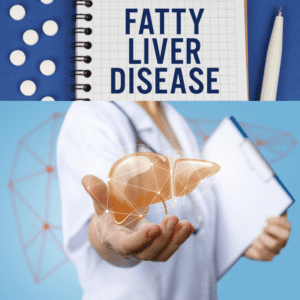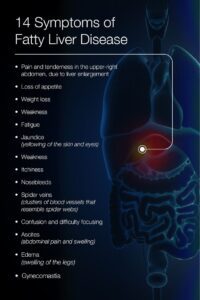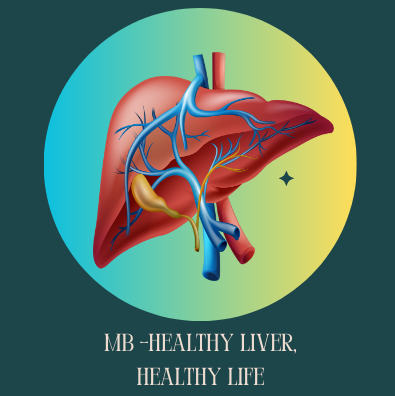Understanding Steatotic Liver Disease: Symptoms, Risk Factors, and Prevention of Non-Alcoholic Fatty Liver

Introduction: Decoding Steatotic Liver Disease
Steatotic Liver Disease, commonly known as Non-Alcoholic Fatty Liver Disease (NAFLD), is a prevalent condition characterized by excessive fat accumulation in the liver. Unlike alcoholic liver disease, NAFLD occurs in individuals who consume little to no alcohol, making it a significant health concern worldwide. In this article, we delve into the symptoms, risk factors, and prevention strategies associated with NAFLD, providing valuable insights for individuals seeking to safeguard their liver health.
Symptoms of Steatotic Liver Disease

Steatotic Liver Disease often progresses silently, with many individuals remaining asymptomatic until the condition reaches advanced stages. However, some common symptoms and signs may manifest, including:
- Fatigue
- Abdominal discomfort or pain, particularly in the upper right side
- Elevated liver enzymes detected on routine blood tests
- Enlarged liver (hepatomegaly)
- Jaundice (yellowing of the skin and eyes)
Risk Factors for Steatotic Liver Disease
Several factors contribute to the development and progression of NAFLD, including:
- Obesity: Excess body weight, particularly abdominal obesity, is a significant risk factor for NAFLD.
- Insulin Resistance: Insulin resistance, often associated with obesity and type 2 diabetes, plays a crucial role in the pathogenesis of NAFLD.
- Unhealthy Diet: Consumption of a high-calorie, high-carbohydrate diet, especially rich in refined sugars and saturated fats, increases the risk of NAFLD.
- Sedentary Lifestyle: Lack of regular physical activity contributes to weight gain and exacerbates metabolic abnormalities associated with NAFLD.
- Genetic Predisposition: Certain genetic factors may predispose individuals to NAFLD, although lifestyle factors often play a predominant role.
Prevention Strategies for Steatotic Liver Disease
While NAFLD poses significant health risks, several preventive measures can help reduce the likelihood of its development or progression:
- Maintain a Healthy Weight: Aim for a healthy body weight through a balanced diet and regular physical activity. Incorporate whole foods, fruits, vegetables, lean proteins, and healthy fats into your diet while minimizing processed and high-calorie foods.
- Exercise Regularly: Engage in moderate-intensity exercise for at least 30 minutes on most days of the week. Physical activity helps improve insulin sensitivity, promote weight loss, and reduce liver fat accumulation.
- Limit Alcohol Consumption: While NAFLD primarily affects individuals who consume little to no alcohol, limiting alcohol intake is essential for overall liver health and disease prevention.
- Manage Chronic Conditions: Control underlying medical conditions such as obesity, diabetes, hypertension, and dyslipidemia through lifestyle modifications and, if necessary, medication management.
- Get Regular Check-ups: Schedule routine medical check-ups to monitor your liver health and assess risk factors for NAFLD. Discuss any concerning symptoms or abnormalities with your healthcare provider promptly.
Conclusion: Empowering Liver Health Through Awareness and Action
In conclusion, Steatotic Liver Disease, or Non-Alcoholic Fatty Liver Disease, presents a significant public health challenge with potentially severe consequences if left unchecked. By understanding the symptoms, risk factors, and preventive strategies associated with NAFLD, individuals can take proactive steps to protect their liver health and overall well-being. Through lifestyle modifications, including maintaining a healthy weight, engaging in regular exercise, and adopting a nutritious diet, individuals can mitigate their risk of developing NAFLD and promote optimal liver function for years to come.
 https://analytics.google.com/analytics/web/#/analysis/p405220706
Skip to content
https://analytics.google.com/analytics/web/#/analysis/p405220706
Skip to content 

seleb66
Normally I do not read article on blogs, however I wish to
say that this write-up very compelled me to take a look at and do so!
Your writing style has been amazed me. Thank you, very nice article.
thank you
slot demo slot demo slot demo slot demo slot demo
Thanks for your marvelous posting! I definitely enjoyed reading it, you might
be a great author. I will always bookmark your blog and may come
back at some point. I want to encourage continue your great job, have a nice holiday weekend!
thank you so much for encouraging me a lot
kaskustoto kaskustoto kaskustoto kaskustoto kaskustoto
Your method of explaining all in this piece of writing is actually nice, every one be able to without difficulty be aware of it, Thanks a lot.
Thank you
Heya i’m for the first time here. I found this board and I find It really useful & it helped me out much.
I hope to give something back and aid others
like you aided me.
We’re a bunch of volunteers and opening a new scheme in our community.
Your web site offered us with useful info to work on. You have done a formidable task and
our whole group can be thankful to you.
Thank you
I enjoy, lead to I discovered just what I was looking for.
You’ve ended my 4 day lengthy hunt! God Bless you man. Have a great day.
Bye
thank you
Very nice post. I just stumbled upon your blog and
wanted to say that I have truly enjoyed browsing your blog posts.
After all I will be subscribing to your feed and I
hope you write again soon!
Thank you so much
I’d like to thank you for the efforts you’ve put in writing this site.
I am hoping to check out the same high-grade content from
you later on as well. In truth, your creative writing abilities
has inspired me to get my own, personal blog now 😉
Thank you for inspiring me
Hello, all is going sound here and ofcourse every one is sharing data, that’s genuinely good,
keep up writing.
thank you for motivate me
Howdy would you mind stating which blog platform you’re working with?
I’m planning to start my own blog soon but I’m having a tough time selecting between BlogEngine/Wordpress/B2evolution and
Drupal. The reason I ask is because your design and
style seems different then most blogs and I’m looking for
something completely unique. P.S My apologies for
being off-topic but I had to ask!
wordpress
I really like your blog.. very nice colors & theme.
Did you make this website yourself or did you hire
someone to do it for you? Plz reply as I’m looking to
construct my own blog and would like to find out where u got this from.
kudos
thank you for appretiation ,this website mprepared by me
It’s really a nice and useful piece of info. I am glad that you shared
this useful information with us. Please stay us up to date like this.
Thanks for sharing.
What’s up to every one, it’s in fact a pleasant for me to go to see this website, it consists of helpful Information.
Thanks to my father who told me on the topic of this weblog, this web site is actually remarkable.
Thank you
If you are going for best contents like myself, only go
to see this web site all the time since it provides quality contents, thanks
Greetings! This is my first visit to your blog! We are a group of
volunteers and starting a new project in a community in the same niche.
Your blog provided us beneficial information to work on. You have done a marvellous
job!
thank you
It is in reality a great and helpful piece of info.
I am happy that you just shared this useful info with us.
Please stay us up to date like this. Thank you for sharing.
Thanks for some other excellent post. The place else
may just anybody get that kind of information in such a perfect approach of writing?
I’ve a presentation next week, and I am on the
search for such information.
Wow, that’s what I was exploring for, what a stuff! present here
at this weblog, thanks admin of this site.
I like the valuable info you provide in your articles.
I’ll bookmark your blog and check again here regularly.
I am quite certain I will learn many new stuff right here!
Good luck for the next!